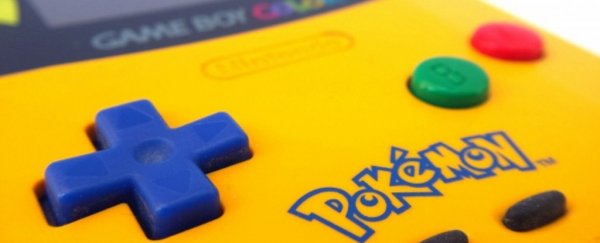A full set of Gym Badges isn't the only way to tell a true Pokémon player from a novice. Stanford researchers have now found that those adults who played the video game for hours as a kid, have an area in their brain that still holds the memory.
Tucked behind the ear in a region that usually responds to images of animals, this 'Pokémon hub' is capable of recognising hundreds of different characters, using pathways that encompass several centimetres of grey matter and include millions of neurons.
The study is small, and was funded by a seed grant, but even so, the authors think it lends credence to the idea that the brain is particularly malleable in young childhood, and especially when objects are placed in a person's central vision.
"It's been an open question in the field why we have brain regions that respond to words and faces but not to, say, cars," says first author Jesse Gomez, a cognitive neuroanatomist who currently works at UC Berkeley.
"It's also been a mystery why they appear in the same place in everyone's brain."
The massive success of Nintendo's Pokémon video games in the late 90s had all the ingredients for the perfect natural study, although it did take Gomez a good while to convince his supervisor that was true.
Played by children as young as 5-years-old, each version of this game exposes participants to the same characters over and over, held on the same handheld device, with the same small square screen, at roughly the same length from our eyes.
"What was unique about Pokémon is that there are hundreds of characters, and you have to know everything about them in order to play the game successfully. The game rewards you for individuating hundreds of these little, similar‑looking characters," Gomez explains.
"I figured, 'If you don't get a region for that, then it's never going to happen."'
It turns out, he was right. Finding 11 adults who were addicted to Pokémon in their youth and started playing no later than age eight, Gomez used a functional MRI scanner while participants identified specific characters.
Compared to the 11 Pokémon newbies, the experienced adults had one part of their brain that was far more sensitive to pictures of Pokémon - the occipitotemporal sulcus. Among non-experts, however, the same neural activity (inherently different to those of faces and animals) was not nearly as apparent, if at all.
When a brain is developing, some research has shown that the wiring of our visual cortex is influenced not by the size or shape of something, but rather by its location in our vision and how much of our vision it takes up, a phenomenon known as eccentricity bias.
In this case, the authors think it is the location of tiny, pixellated Pokémon in a child's central vision and not their shape, size, or animal-like features, that determines where they get stored in a developing brain - in this case, the lateral visual cortex.
"Our findings suggest that early childhood visual experience shapes the functional architecture of high-level visual cortex, resulting in a unique representation whose spatial topography is predictable," the authors conclude.
For any parent on the brink of throwing out their child's video games, however, one thing should be made clear: none of these results imply long-lasting harm, and many of the participants have PhD's so it's highly unlikely that Nintendo somehow stunted their intelligence.
Growing up, our brains must somehow organise all the things we see, so it's not surprising that the objects or faces we see a lot in childhood, like little pixel Pokémon or Jennifer Aniston, can end up with their own unique area.
This study has been published in Nature Human Behaviour.
